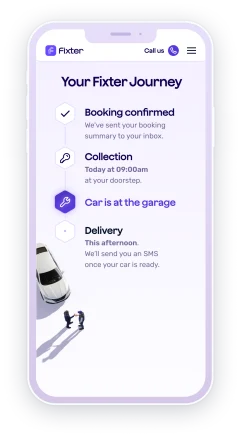Common Issues with the Suzuki Swift: What You Need to Know
The Suzuki Swift is a popular choice among drivers in the UK, thanks to its compact design and fuel efficiency. However, like any vehicle, it is not without its quirks and common issues. Owners often report problems with the transmission, especially in older models, which can lead to costly repairs if not addressed early. Electrical faults, such as malfunctioning lights and faulty wiring, are also frequently mentioned by Swift drivers. This article will guide you through the most common issues, including the suzuki swift common problems, faced by Suzuki Swift owners. and offer practical advice on how to manage or prevent them.

Introduction to Suzuki Swift Issues
The Suzuki Swift, known for its nimble design and efficient fuel use, has its fair share of mechanical concerns. Many issues arise due to wear and tear or lack of regular upkeep. Understanding these common problems can help owners mitigate larger, more costly repairs. This section will delve into these typical issues, including common problems with suzuki swift, and explore the importance of consistent maintenance. and explore the importance of consistent maintenance.
Understanding the Common Problems
Common issues with the Suzuki Swift often revolve around its transmission, electrical system, and engine performance. Many of these problems, including gearbox issues, stem from regular use and can be exacerbated by neglecting routine servicing.
Electrical faults are particularly frequent, such as issues with the car's wiring or lighting system, which can be both frustrating and hazardous. Furthermore, transmission problems, such as stiff gear changes and whining noises especially in older models, can lead to a rough driving experience.
Regular checks and addressing minor repairs and issues promptly can prevent escalation. Ignition system hiccups and fuel system malfunctions are also reported but can often be attributed to maintenance lapses. Understanding these challenges allows for proactive management.
Importance of Regular Maintenance
Regular maintenance is crucial for keeping the Suzuki Swift fuel efficient and running smoothly. By adhering to the recommended service schedule, owners can avoid many common issues that plague this vehicle.
Regularly check and replace oil and filters to maintain engine health.
Inspect the transmission system for signs of wear and address any issues immediately.
Ensure the electrical system, including battery and lighting, is functioning correctly.
Routine care not only prevents breakdowns but also extends the vehicle's lifespan. Ignoring small issues can lead to larger, more expensive problems, making regular maintenance a cost-effective strategy. Consistent checks can help in early detection of potential issues and maintain the impressive fuel economy , ensuring safety and reliability.
Engine Performance Concerns
The engine is the heart of any vehicle, and the Suzuki Swift is no exception. Performance issues can range from minor annoyances to significant concerns that require immediate attention. Understanding these potential issues can help owners maintain optimal engine health.
Troubles with Ignition System
The ignition system is vital for starting the engine. Problems here can lead to starting difficulties or complete failure. Common symptoms of issues, such as a faulty speed sensor, include the engine turning over slowly or failing to start altogether.
Ignition issues often arise from worn-out spark plugs or faulty ignition coils. Regularly inspecting and replacing these components can prevent most problems. In some cases, wiring issues can also contribute to ignition troubles.
Recommendations for addressing ignition issues include:
Regularly check and replace spark plugs and ignition coils.
Ensure battery connections are secure and free of corrosion.
Address any wiring problems promptly to avoid further complications.
Fuel System Malfunctions
The fuel system is essential for efficient engine operation. Malfunctions here can lead to poor fuel economy and reduced performance. Common issues, which can be resolved at a reasonable cost, include clogged fuel injectors and a failing fuel pump.
Symptoms of fuel system problems often include rough idling, difficulty starting, or a noticeable drop in fuel efficiency. Regular maintenance can help identify and address these issues before they become severe.
To maintain the fuel system:
Use quality fuel to prevent injector clogging.
Regularly inspect and clean fuel injectors.
Replace the fuel filter as part of routine maintenance.
Transmission and Gearbox Challenges
The transmission system is critical for vehicle performance. Whether automatic or manual, issues here can affect driving comfort and safety. While Swift models have known transmission challenges, they are generally considered to be suzuki swift reliable, which are essential to address.
Automatic Transmission Issues
Automatic transmissions are convenient but can develop issues over time. Common problems include slipping gears, delayed shifting, or strange noises during operation.
Causes of these issues often involve low transmission fluid or worn-out components. Regularly checking fluid levels and ensuring the system is well-lubricated can help prevent problems.
Steps to address automatic transmission issues:
Check transmission fluid levels and top up if necessary.
Listen for unusual noises and address them promptly.
Have the transmission inspected by a professional if problems persist.
Manual Gearbox Problems
Manual gearboxes are preferred by many for their direct control, but they can also encounter issues. Problems may include clutch slipping, difficulty shifting gears or unusual noises during gear changes.
These issues are often caused by worn-out clutch components or low gearbox oil levels. Regular checks and timely replacements can maintain gearbox health.
To maintain a manual gearbox:
Regularly check gearbox oil levels and quality.
Inspect and replace clutch components as needed.
Avoid aggressive shifting to reduce wear and tear.
Electrical System Glitches
The electrical system in the Suzuki Swift supports various functions, from starting the engine to operating lights. Glitches here can lead to inconvenience and safety concerns. Addressing these issues, which can be more prevalent in other cars, promptly is key.
Battery and Charging Woes
The battery and charging system ensure the vehicle starts and runs efficiently. Problems may include a dead battery or issues with the alternator.
Symptoms often involve dimming headlights or difficulty starting the engine. Regular checks can help prevent these issues.
Tips for maintaining the battery and charging system:
Ensure battery terminals are clean and corrosion-free.
Regularly test the battery's charge and replace it if necessary.
Check the alternator's performance during routine maintenance.
Lighting and Indicator Faults
Lighting and indicator systems are crucial for safe driving. Faults here can include blown bulbs or malfunctioning indicators.
These problems are often simple to fix with regular bulb checks and replacements. Ensuring proper function is key to vehicle safety.
To maintain lighting and indicator systems:
Regularly check all lights and indicators for correct operation.
Replace blown bulbs promptly to maintain visibility.
Check the wiring for any signs of wear or damage.
Suspension and Handling Difficulties
A vehicle's suspension and handling systems are essential for comfort and safety. Issues in this area can lead to a rough ride or difficulty steering, significantly impacting overall driving reliability and experience.
Steering System Complications
The steering system is crucial for vehicle control. Complications may include issues with the suspension arm, difficulty turning the wheel or uneven tyre wear, which can affect safety.
These issues often arise from misaligned wheels or worn-out steering components. Regular checks and adjustments can prevent these problems.
Steps to maintain the steering system:
Check tyre pressure and alignment regularly.
Inspect steering components for wear and replace them as needed.
Ensure power steering fluid is at the correct level.
Brake System Troubles
The brake system is vital for safety. Troubles may include squeaky brakes or reduced stopping power, which are serious concerns that need to fix immediately .
These problems can be due to worn-out brake pads or low brake fluid levels. Regular inspections are necessary to ensure reliable braking performance.
To maintain the brake system:
Regularly check brake pads and replace them when worn.
Maintain correct brake fluid levels.
Address any unusual noises or reduced braking efficiency promptly.








